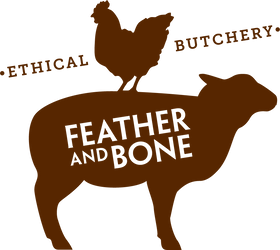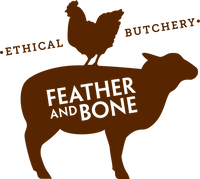Drought report: Burraduc Buffalo Farm, November 2018
As the extreme weather across the country continues, the air waves are choked with heartbreaking stories of farmers brought to their knees and struggling to cope. From the city, it's hard to get a clear perspective on the scale of hardship, the causes and the possible solutions. So last November, in response to media reports of farms in crisis due to the drought, we decided to seek some perspective from the farmers with whom we work. Before you read their reports, we'd encourage you to read our introduction - 'Grass roots response to drought'.
We’ve checked in with all of the farms over the last month and it’s sobering to note that little has changed since November 2018.
Burraduc Buffalo Dairy Farm
Farmers: Elena and Andrei Swegen
Location: Bungwahl, NSW, 2423
Produce: Buffalo cheeses and yoghurt
We started buying Burraduc produce in May 2017
7 November 2018
I can't really answer all the questions but just a little reflection.
My background is soil science and agri chemistry and I’ve never stopped learning as we farmed in many different locations of NSW. We’ve done permaculture courses, a lot of reading and learning from ground up, running a number of different projects with DPI and LLS trying to restore the land, retain water, plant trees, using innovative approaches such as yeoman ploughing etc, always using organic and bio dynamic methods.
We’ve been through the 12 years of drought and done many soil tests and water tests in many locations. It took some more years to learn that NOTHING really works without decent rainfall. Drought is drought. You still try and you may do a little better than the rest if you are a thinking type of farmer but at the end of the day (or life) you come to the conclusion that you should not farm the land that is not suitable for farming, which is the case with most of Australian farmland.
Trying to make money by farming unsuitable land in prolonged drought just does not work. But it often takes years to understand it. Nothing can replace or mitigate the absence of rain. So we moved.
Our story is probably not what you asked, but this is the truth.
Our solution to the drought and climate change was to find the land with best rainfall and as drought-proof as possible. So we spent years researching and studying more until we found a combination of parameters in place to start with: reasonably fertile soils, high rainfall, right type and variety of landscape with running creeks, gentle (not sharp) hills and north-east aspect for protection from strong south-west winds, the land that can retain water well and not get waterlogged.
We did look at a lot of high rainfall, swampy areas and almost fell into that trap but pulled out. Finally, we found the land which is unique and precious because of all these parameters in place. Now and only here, we can finally farm the way we want to farm - without chemical inputs, preserving and improving the resources naturally already available by not overstocking, planting more trees, protecting all wildlife including predators, subdividing into smaller paddocks for cell grazing, resting the paddocks for long enough to let grasses seed, fencing off and looking after the creeks, encouraging microbial and fungi activities in the soil etc.
All that is really only possible in the presence of rainfall, which we luckily have here, on the coast, surrounded by big fresh water lakes.
This is a bit long and probably not the answers you are looking for, but we had a lot to do with drought in the past and have come to one simple conclusion: not to farm in the drought.
Parts of Australia that are not suitable for farming should simply be left for trees and wildlife. The land with good rainfall should be farmed very carefully, only small scale, with the lowest impacts possible and strongest consideration for biodiversity and environment, really integrated into and being viable part of the eco-systems.





Leave a comment